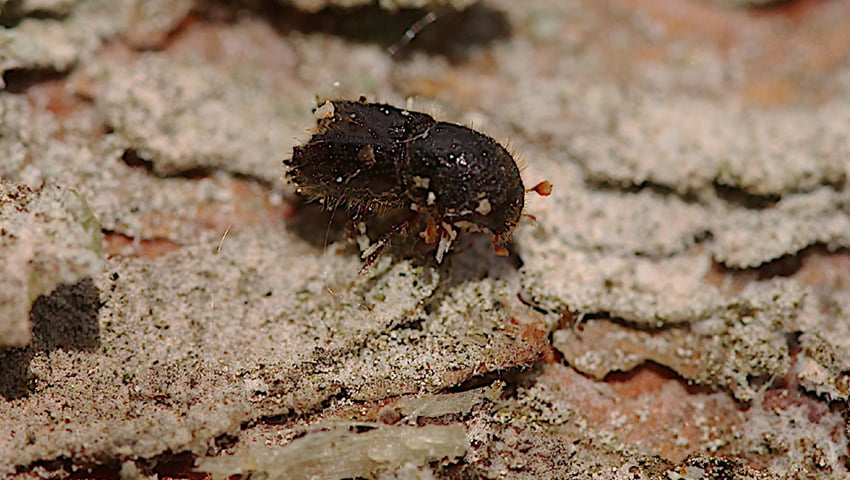Woodland managers, landowners and the forestry industry are encouraged to remain vigilant as the Forestry Commission announces an expansion of the current Ips typographus demarcated area following findings of the tree pest, also known as the eight-toothed spruce bark beetle, on Norway spruce in East Anglia.
The eight-toothed spruce bark beetle is a serious pest of spruce trees in Europe and was first identified in the UK in Kent in 2018.
The beetle prefers stressed or dying trees but under the right conditions it can attack healthy trees and has the potential to cause significant damage to Great Britain’s forestry and timber industries.
From Wednesday 12 June 2024, requirements will come into force across an extended, larger demarcated area in the South East of England and East Anglia to prevent potential spread of the pest, in line with the eradication action taken by the Forestry Commission to manage outbreaks.
The existing demarcated area, last extended in 2022, covers parts of Hampshire, Berkshire, Buckinghamshire, Hertfordshire, Surrey, City of London, Greater London, West Sussex, East Sussex, Kent, Essex and Hampshire.
After findings of Ips typographus were reported to Forestry Commission, the extended zone will now cover parts of Bedfordshire, Cambridgeshire, Lincolnshire, Norfolk, and Suffolk.
Within these areas, the felling and movement of all spruce material, including trees and wood with bark, isolated bark, and wood chip with bark, is prohibited within the demarcated area unless authorised by the Forestry Commission.
Woodland managers must provide written notification to the Forestry Commission if they intend to fell or kill any trees of the genus Picea A. Dietr over three metres in height.
Additionally, processing of spruce material which has originated in the demarcated area may only be undertaken at premises authorised by the Forestry Commission to receive this material and there is also a prohibition of susceptible material being left in situ, unless authorised in writing by a plant health inspector.
The Forestry Commission continues to robustly manage this pest and prevent its establishment within Great Britain.
Landowners, managers and timber processors should remain vigilant for Ips typographus and are encouraged to continue to check the health of spruce trees on their land especially as temperatures rise and we enter the flight season.
Any suspected findings of the beetle can be reported using the online portal TreeAlert.
Forestry Commission spokesperson Andrea Deol said, “Following a report of Ips typographus to the Forestry Commission in East Anglia we conducted a swift investigation including rapid eradication measures, alongside wider environment surveillance to determine the scale of the issue and identify additional suitable management actions.
“All landowners, managers and timber processors should remain vigilant for Ips typographus. It is important for landowners to continue to check the health of spruce trees on their land, this is particularly important now we are entering the next flight season.”
For authorisation to commence felling, move or process spruce material that has originated in the demarcated area please contact [email protected]
Landowners and managers served with a Statutory Plant Health Notice due to an outbreak on their site may be eligible for grants to support felling and restocking activity through the Tree Health Pilot.
The Forestry Commission is encouraging landowners to proactively remove spruce from the South East of England and replant with other non-susceptible species.
To view the boundaries of the extended demarcated area, a new map is available
